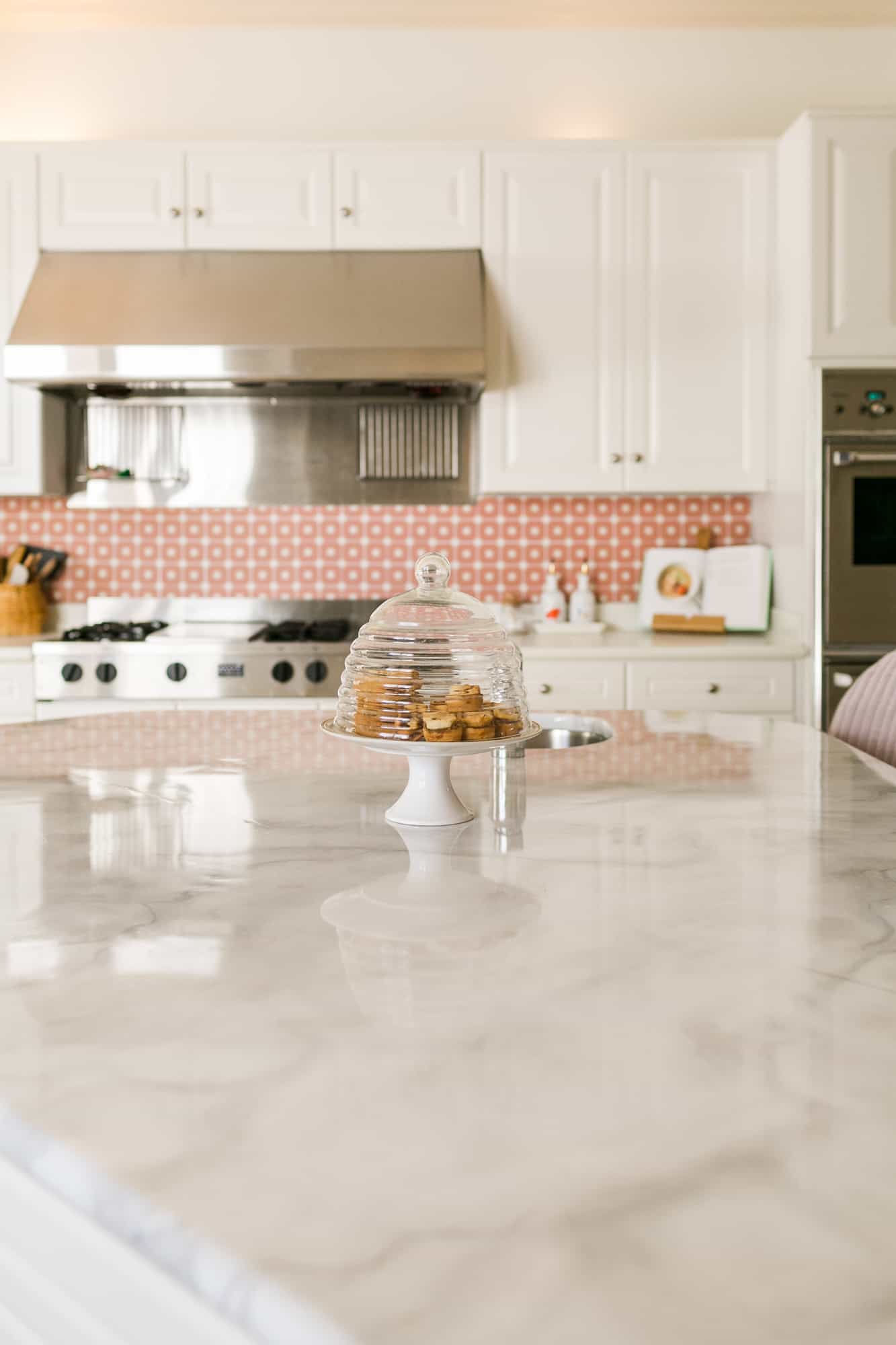
I always wanted to try one of those faux marble DIY kits, especially after giving my kitchen a (budget-friendly) makeover and adding a faux tile backsplash.
So, I purchased my faux marble countertop kit and set aside a two-day window of time to work on it.
In this post, I will share everything you need to paint your own countertop, tips for painting the marble, and a list of pros and cons for this project. Spoiler alert: I’m so happy with the results!

But first, let’s talk about the before and after real quick. These are unfiltered, unedited phone pics.
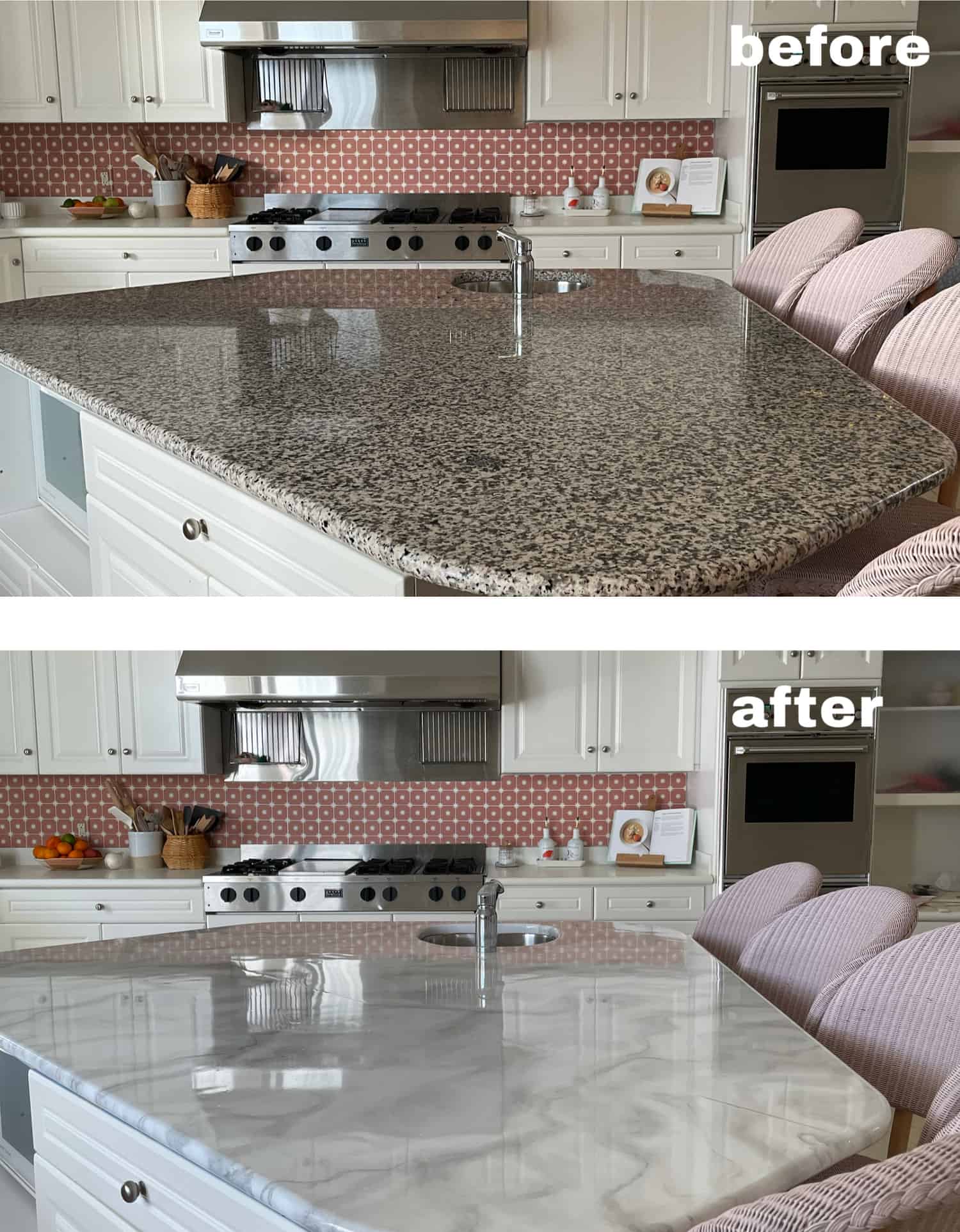
When I moved into my home, the island counter was one of the main things that stood out to me as “not my style.” However, with a kitchen remodel a few years off, it did not make sense to pay for a new counter that we wouldn’t even keep in the final design.
After our first Christmas in the house, my mind began to wander back to DIY solutions. Was there anything I could do that was inexpensive, but could also hold up to our family’s traffic?
This is a high-traffic counter—our kids sit here to eat several times every day.
Anyway, I finally caved and bought this faux marble countertop kit and it was the PERFECT solution I was looking for. I love how it looks now—it makes me smile every time we walk into the room. It’s easy to clean as well. I am so happy I tried it!
I promise to be brutally honest because even though I love my results, I know this is not necessarily a good choice for all homes.
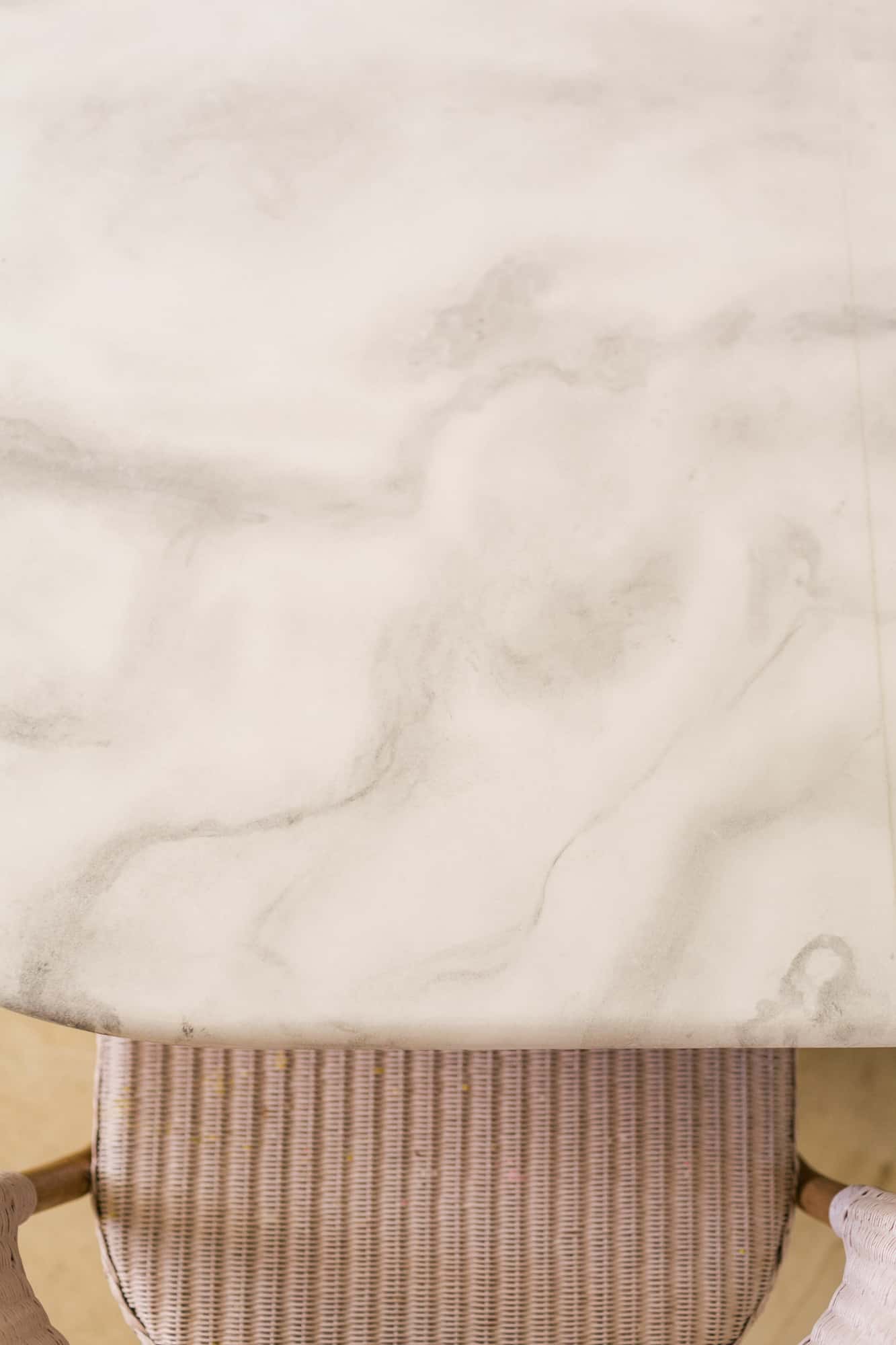
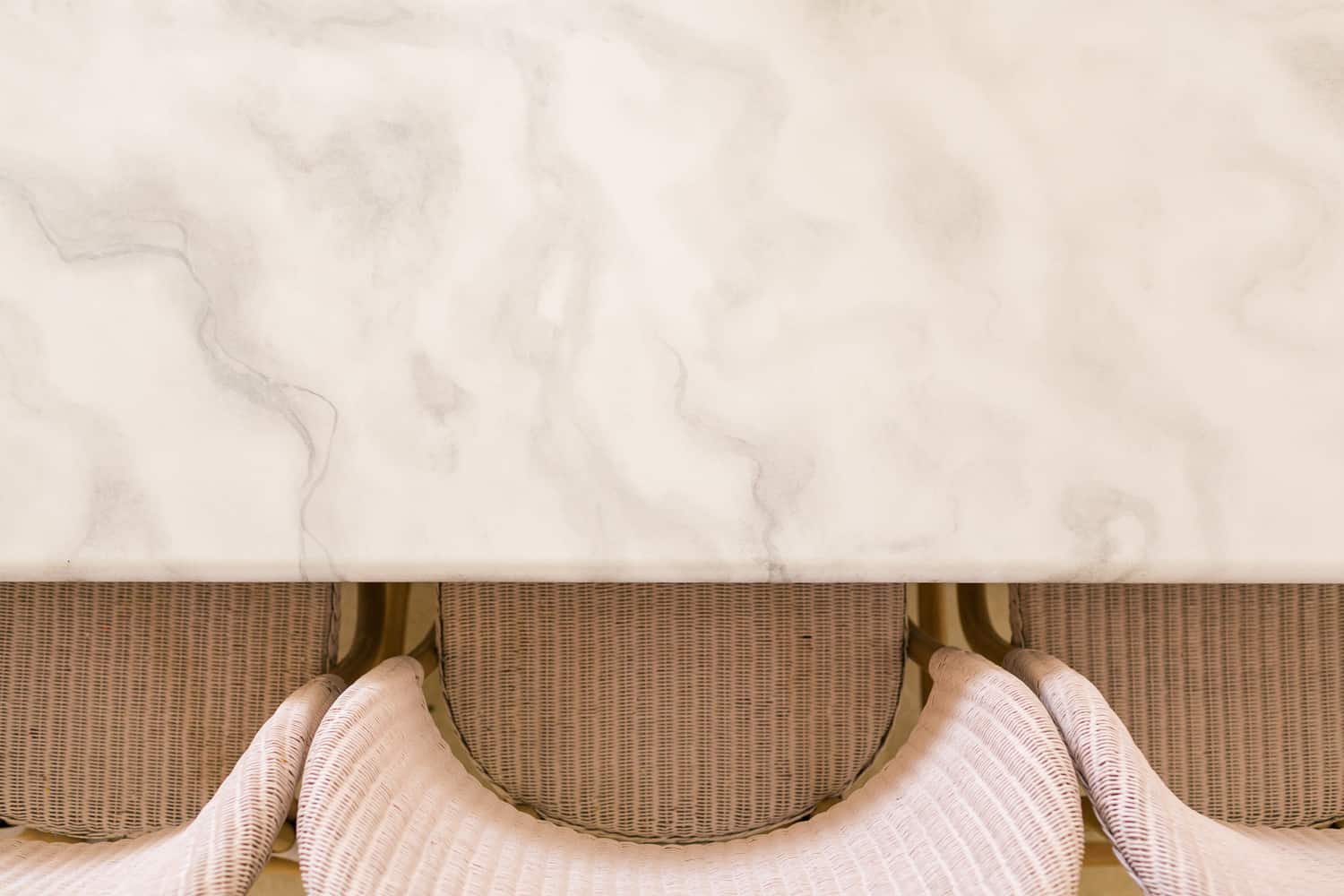
DIY Marble Countertop Tips:
A lot of people have asked me if you need to be artistic or a good painter to do this. I don’t think so. I would say that you need to be patient and detail-oriented, but it’s better if you aren’t a perfectionist.
Since I am not a perfectionist (and I’m honestly not that good of a painter either), I had so much fun just getting messy and trying to emulate the look of real marble from photos I had saved.
I was surprised how FUN this was. In all my DIY years, this was probably my favorite DIY I’ve EVER done. I had so much fun doing it and I was surprised by how easy it was.
I spent about three hours doing all the marbling for my counters. By the end, I was starting to think they looked really bad. Then, I stepped away for an hour and when I came back I was happy with them again! So if you start to feel frustrated, I suggest taking a quick break.
Before starting my counter, I watched this 18-minute YouTube video. It’s made by the makers of the kit and it’s very detailed on all the steps. Watching the full video is essential before you begin.
It will probably clear up any questions you have. We followed their instructions. In addition to the kit, the only supplies we needed were a pair of tweezers and painter’s tape.
How Do You Make the Marble Look Real?
The most important tip I have for making the marble look real is to save some photos of real marble you love and try to copy the look as you paint.
That was helpful for me to try to get a good level of imperfection. If I wouldn’t have kept looking at the photos of real marble, it would have looked more fake.
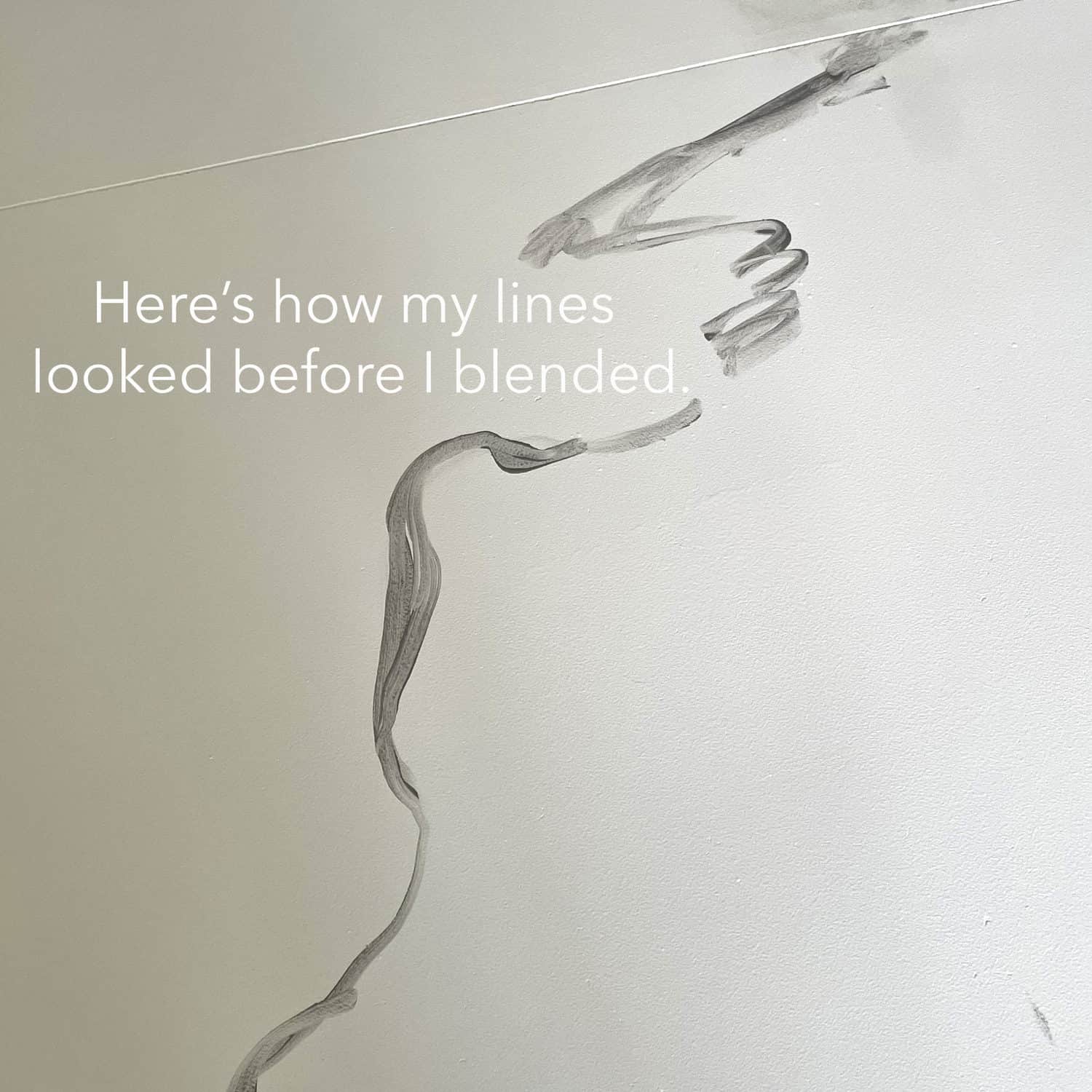
One thing I did differently from the video is that I found it easier to do the edges as I went along. I think keeping your edges coherent so each vein looks seamless is very important. If you have a backsplash ledge, I would follow this advice there as well.
Tips:
- If you are nervous, go for lower contrast. It’s easier to get a lower contrast marble to look real than a high contrast.
- Don’t be afraid to mess up—it’s so easy to wipe a section off and start over anytime you need to.
- If you go too dark you can lighten them later by blending in a little more white paint.
- You don’t have to buy the kit to practice and see if you enjoy (or can do) the faux painting. Just try it out on a piece of white foam board with some paint and brush (watch the video above and try to do the technique).
I didn’t think to try this in advance, but the fear that I wouldn’t be good at the faux painting was a HUGE obstacle for me. So there’s a low risk way to try it out!
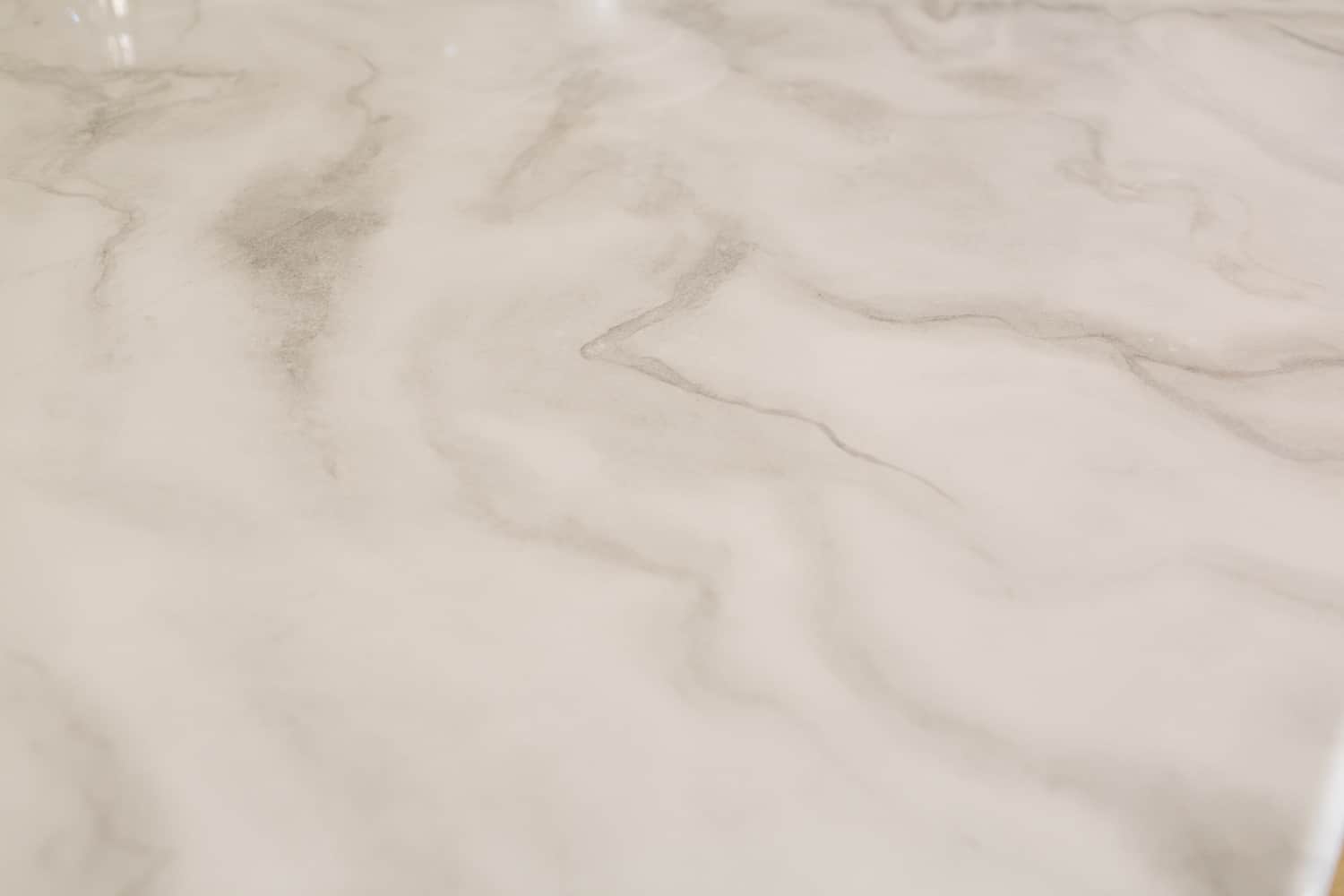
Can you place hot pans on the surface without a pad?
No. This was one of the most asked questions! I never put hot pots on any of my counters without at least a potholder, so I was surprised. If that is something you like to do, I would not recommend these counters for you.
Is it easy to clean?
Yes. It’s a shiny, glossy finish and easy to wipe and clean.
Can you start with any kind of counter? Does it need to be granite?
It does not need to be granite. In my opinion, it’s more ideal to do it on a laminate surface because then it’s a 100% upgrade.
There’s a valid debate to whether doing it over granite is making it less valuable (I would say that it does devalue it some), but in the case of our house since we did not like the granite and were planning to replace it anyway that wasn’t a factor for me.
According to the Giani website, you can use this on pretty much any type counter—vinyl, wood and different types of real and fake stone.
Did the epoxy smell really strong?
No. I was pleasantly surprised. The primer coat of paint is probably the strongest smell and it’s on par with regular wall paint. We had a screened window open the whole two days and there was no noticeable smell at all, which was AWESOME. The epoxy didn’t smell.
Would you do this on counter you are keeping long term?
If you are covering over a laminate counter in poor condition, I would say yes! If you are covering over granite like I did, I would pause and really consider whether it’s worth it to you. The surface will no longer be heat-resistant (like granite is).
In a low traffic space, I think YES, for sure. But no kitchen is really low traffic.
Did you make any mistakes? If so, how did you fix?
Yes. As I was painting, my brush was shedding little hairs and when I picked them off it made scratches (use tweezers instead!). Until the epoxy is on, the painted surface is very delicate. To fix it, I just dotted more paint on it before it was sealed.
The other mistake we made was that there were a few small holes in the epoxy finish around the seams. So on another day we poured a TINY amount more on, just enough to fill in those holes.
We had a lot of supplies leftover (about half the paint and epoxy). So we’re saving those in case we need to make repairs later.
How does the surface feel?
Glossy and slick. Imagine a counter or table and a bar or restaurant, a lot of times those tables have an epoxy finish. It’s similar to that, although not as thick.
Did you actually do this by yourself? Can it be a one person job?
Collin and I tag teamed—he did the base coat and the epoxy, I did the faux marbling. All the steps were easy and either of us could have easily done the whole project alone!
Did it turn yellow?
The main reason I wanted to use a kit rather than source all the supplies from someone’s DIY list was to avoid the risk of yellowing. Ours has no yellow color at all.
Is it food-safe?
No. You are recommended to use a cutting board, plates, etc. It’s also not safe to cut on this without a cutting board (you might scratch it up).
Do you have to remove the sink or can you go around it?
No, you just tape everything off and go around it.
Did the epoxy drip everywhere?
It dripped a little bit (it was all caught in the provided tarps), but very little because we followed the video’s guidelines. You paint the edges with a brush, so you are only pouring it into the center of the counter.
Does it look better in photos or real life?
There are so many things that look better in photos, but this isn’t one. It looks the same in person! 🙂
Pros and Cons of This Project:
Pros:
- It’s affordable. For under $200, you can complete this counter project.
- It takes 2-3 days to complete this project, and it makes a huge difference in a room.
- It was so much fun! One of my favorite DIYs I have ever done!
- It’s easy. On the spectrum of counter DIYs (for example, this concrete countertop), I would say this is very easy.
Cons:
- Faux painting is scary for many people.
- You cannot set hot pots on this surface. Use a trivet instead.
- You cannot cut vegetables on this surface and you should not serve food directly on it. Use a cutting board, plates, etc.


Who Should Do This Countertop DIY?
- Anyone who wants marble counters but finds them inaccessible for budget reasons.
- Anyone who has vinyl countertops in poor condition.
- Anyone planning to remodel in a few years or looking for an easy phase-one makeover to love your space more in the meantime.
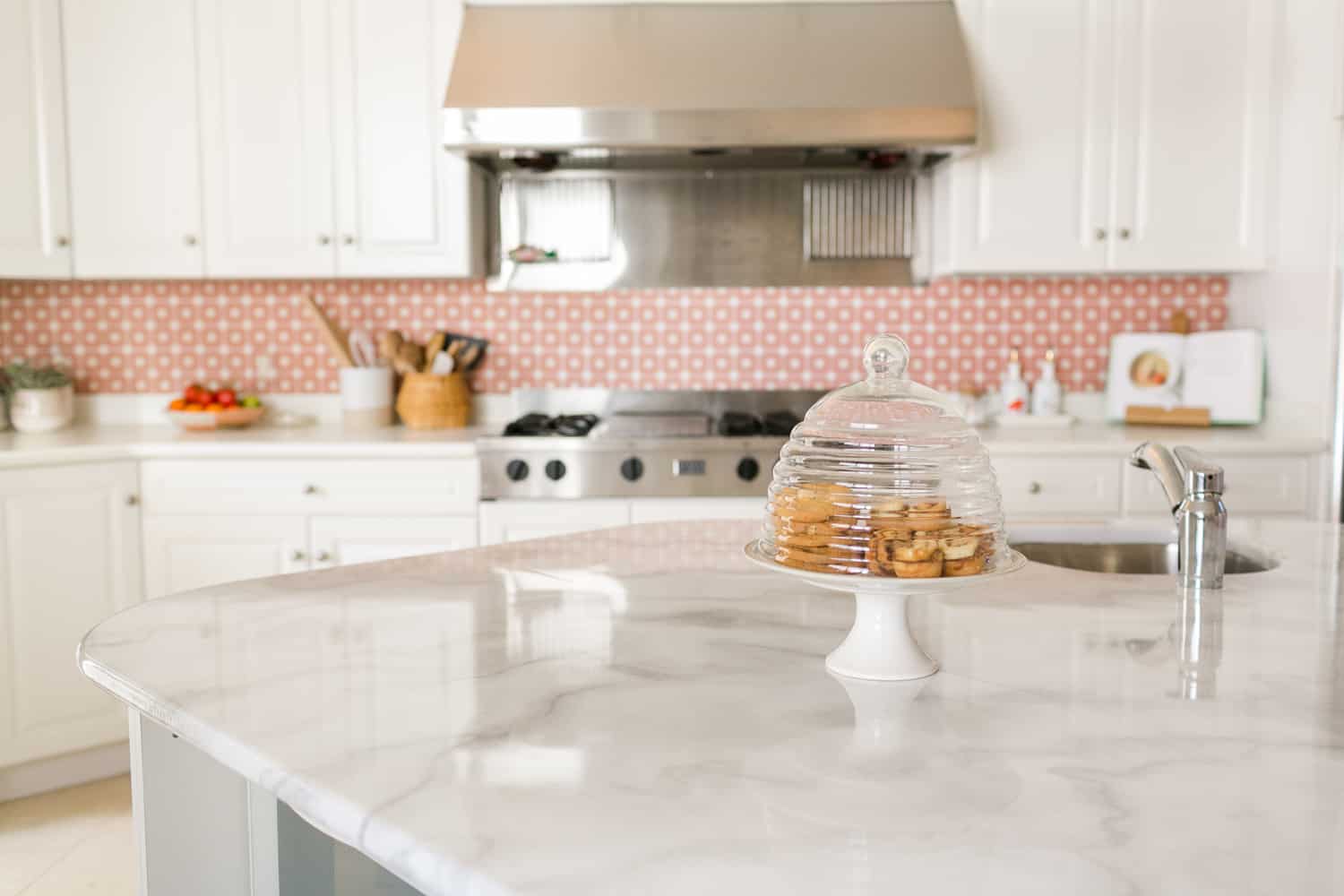
I hope this post was helpful! If you’ve done with project, I’d love to hear about your experiences! xx- Elsie
Looking for more ways to makeover your kitchen? Check out …